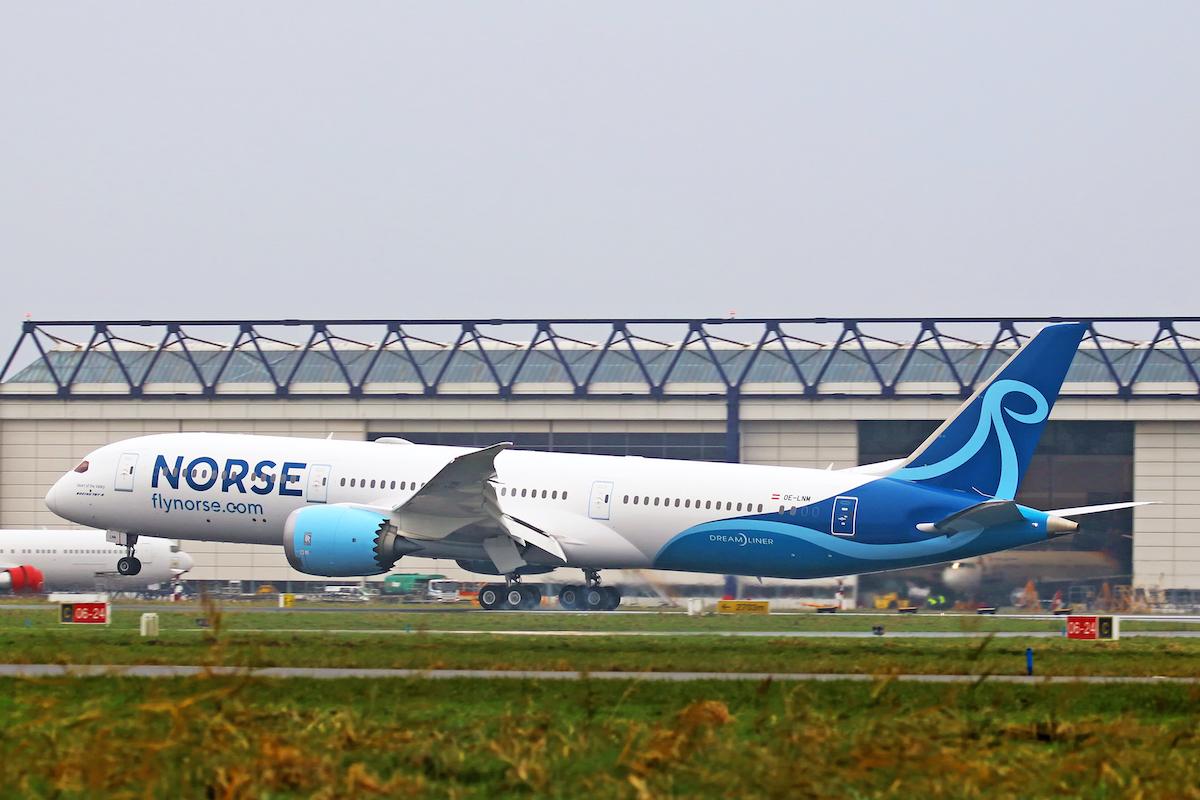
The US Transportation Department (DOT) has given Scandinavian startup Norse Atlantic Airways the green light to launch scheduled commercial operations between Europe and the US.
The long-haul LCC lodged an application in September for an exemption and foreign carrier permit, outlining plans to serve Fort Lauderdale (FLL), New York Stewart (SWF) and Ontario (ONT) from Norway’s capital Oslo (OSL). Norse hopes to start its maiden flights in spring.
“We believe that transatlantic travel will resume with full force once the pandemic is behind us,” Norse CEO and founder Bjørn Tore Larsen said.
“People will want to explore new destinations, visit friends and family and travel for business. Norse will be there to offer attractive and affordable flights on our more environmentally friendly Boeing 787 Dreamliners to both the leisure and cost-conscious business traveler.”
Norse received its air operator’s certificate from Norway’s civil aviation authority Luftfartstilsynet in December and took delivery of its first 787-9 aircraft during the same month.
The DOT approval means the carrier is now free to offer routes between any point in Norway, the European Union and the European Common Aviation Area to any destination in the US.
Norse’s initial network strategy is similar to that previously employed by Norwegian Air Shuttle prior to its exit from the transatlantic market. From Oslo, the airline is targeting three leisure destinations with large catchment areas—New York, Los Angeles and South Florida—but opting to fly to lower cost airports.
However, the LCC has managed to avoid the labor union objections that Norwegian faced, vowing to create “hundreds” of jobs for US-based flight attendants, as well as partnering with local communities, tourism organizations and businesses.
Larsen said: “Our people will be our competitive advantage. We are building a high-performance culture and creating an environment where we value diversity, ensuring that all colleagues feel a sense of belonging.”
After launching from Oslo, Norse intends to add transatlantic service from other points in Europe, with London and Paris thought to be targets.
